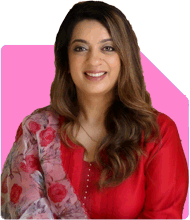Pooja Khera | Answer |Ask -Follow
Life, Relationship Coach - Answered on Jan 16, 2023
Hi Pooja My husband and I were going through a tough time during the lockdown and I got in touch with an old friend. Both of us are married and have a history with each other. We knew each other since we were young. We got involved physically and although we are mature adults, we do long for each other. But there are kids and much as we'd want to be together, we can't afford to take this relationship forward. We have limited our communication but it is getting harder by the day because we do love each other. Is this normal? What do you generally advice someone in a situation like this? How do we deal with this situation better?
You may like to see similar questions and answers below
Anu Krishna |1754 Answers |Ask -Follow
Relationships Expert, Mind Coach - Answered on Jan 07, 2023
Anu Krishna |1754 Answers |Ask -Follow
Relationships Expert, Mind Coach - Answered on Nov 18, 2024
Ramalingam Kalirajan |10906 Answers |Ask -Follow
Mutual Funds, Financial Planning Expert - Answered on Dec 19, 2025
Nayagam P P |10859 Answers |Ask -Follow
Career Counsellor - Answered on Dec 19, 2025
Ramalingam Kalirajan |10906 Answers |Ask -Follow
Mutual Funds, Financial Planning Expert - Answered on Dec 19, 2025
Ramalingam Kalirajan |10906 Answers |Ask -Follow
Mutual Funds, Financial Planning Expert - Answered on Dec 19, 2025
Ramalingam Kalirajan |10906 Answers |Ask -Follow
Mutual Funds, Financial Planning Expert - Answered on Dec 19, 2025
Radheshyam Zanwar |6751 Answers |Ask -Follow
MHT-CET, IIT-JEE, NEET-UG Expert - Answered on Dec 19, 2025
Radheshyam Zanwar |6751 Answers |Ask -Follow
MHT-CET, IIT-JEE, NEET-UG Expert - Answered on Dec 19, 2025
Samraat Jadhav |2514 Answers |Ask -Follow
Stock Market Expert - Answered on Dec 18, 2025
Reetika Sharma |432 Answers |Ask -Follow
Financial Planner, MF and Insurance Expert - Answered on Dec 18, 2025
Reetika Sharma |432 Answers |Ask -Follow
Financial Planner, MF and Insurance Expert - Answered on Dec 18, 2025























